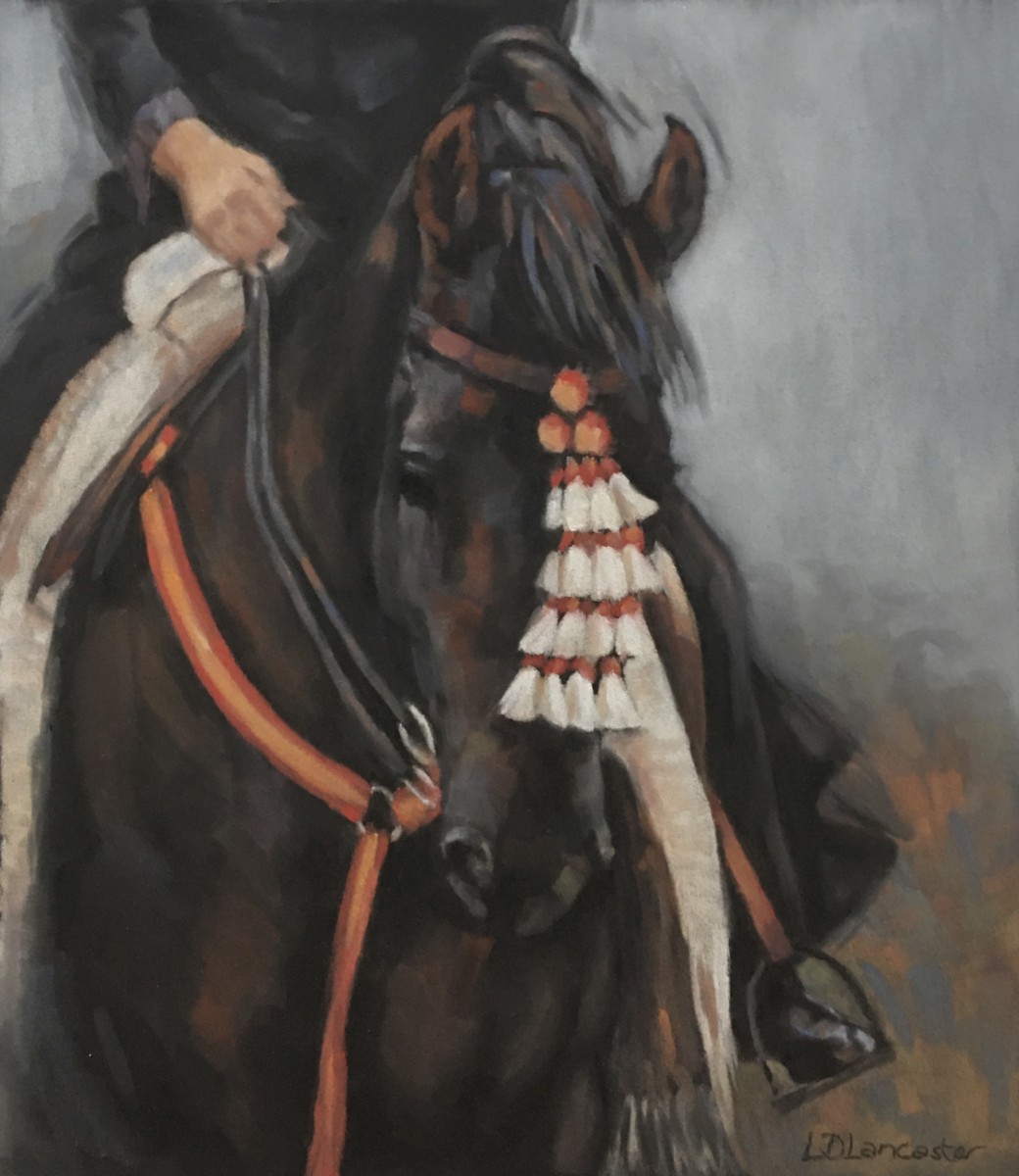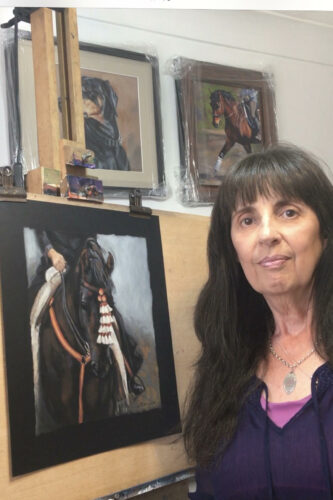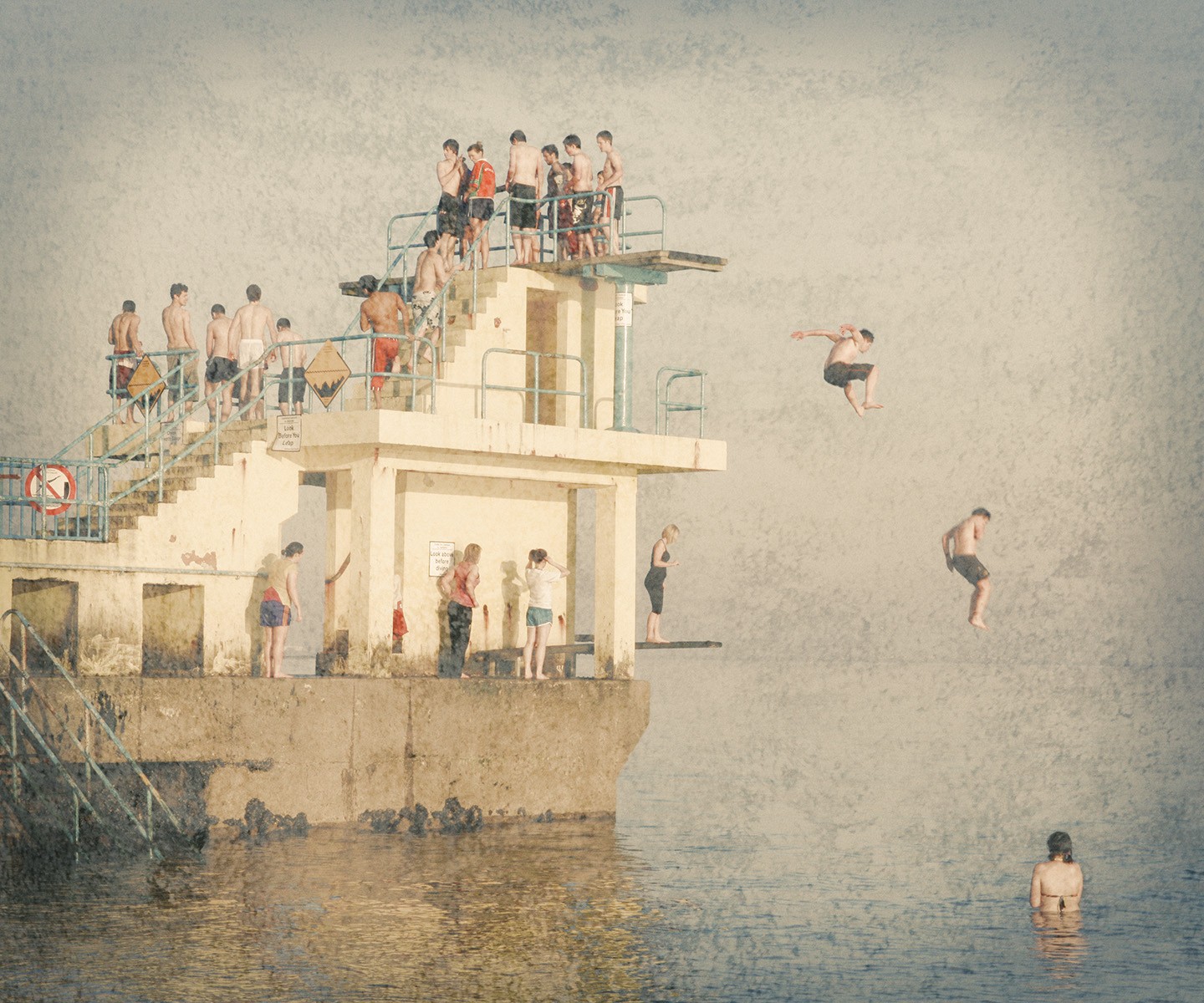The dynamics of colour and depth are created in Lorna Lancaster’s pastel on paper Spanish Show Horse. The Spanish horse is in full regalia at a show and is painted in pan pastels. Focusing on the horse and rider, with the horse as the focal point, the artist has created a piece which is both powerful both artistically and emotionally.
From the artistic viewpoint, you can see a firm grasp on organic detail. The style is like that of Edward Degas where the lines and shadows are concerned. Additionally, there seems to be some John Frederick Herring influences as well. This could be a result of Lorna Lancaster’s study of art history, graphic arts, and her association with the Society of Equestrian Artist. Either way, the composition yields a power visual for the viewer to enjoy.
The horse’s muscles are defined by creating shadows with blacks and browns. At the same time, the artist refrains from going too far with the definition, giving the viewer just enough information put the pieces together and form the shapes within his or her mind. The rider is left undefined. This not only keeps the focus on the horse but gives the viewer the ability to define the rider in his or her own mind. Only in the head of the horse and other foreground layers do we see that there has been attention to defining details. But even in these layers we see that the composition is aimed at giving the viewer the option of filling in certain visual gaps.
In terms of the composition of the piece, Lorna Lancaster makes use of positive and negative space well. Using bold pastel colour selections while consciously using white to bring the viewer’s eye from the foreground to the midground of the piece, a sense of motion is created. Negative space within the piece is just as dynamic as the foreground in that there is a textural depth presented by various blues, greys, and browns. Again, this helps to establish a sense of motion.
Emotionally, Lorna Lancaster has brought out the influences upon her life. Specifically, the viewer can experience the influences that she has had with owning horses and painting them for much of her career. With Spanish Show Horse, there is not a focus on the rider but more of a focus on the emotion of the horse. One is transported into a world where Louis L’Amour would feel comfortable.
To understand the artwork further we asked the artist the following:
In this painting as well as many of your other works there is a feeling of motion. How is the motion in this piece intended to help the viewer?
The soft edges and little lines help give a sense of movement. By just showing her hand and leg the viewer also gets the sense of motion because their mind will conclude horse and rider are moving due to the contact with the horse’s mouth via the reins and bit, his head position and her leg position which is giving instructional aid. The head-dress and forelock are not hanging straight as they would if he were standing still so I think that helps too.
The rider in this painting is ambiguous as is the horse in some of the details. Was this done intentionally for the viewer or is it a result of the stylistic options used in the painting?
It’s a bit of both, I chose a cropped view because I wanted to concentrate just on the horse’s head and colourful regalia whilst also creating the sense of movement by showing the rider in action on the horse. I don’t like to use too much detail as my style is more impressionistic than realism, so ideally leaving as much to the viewer to imagine as possible.
Can you please expound upon why you chose this medium and subject for this piece?
Horses are my passion and I have owned several over the years (although I don’t have one currently). I’m compelled to paint them because of my passion for them and also the graceful shapes they create and I love the challenge of getting the anatomy as correct as possible! I have been using Pan Pastels for around approximately 12 years now, having spent many years painting before that in traditional pastels. I discovered Pan Pastels by chance and immediately wanted to try them. They are applied with applicators which feel more like painting than traditional pastels, and the fact you can blend them on the paper without using your fingers appealed to me. Most people use them as a base layer and use traditional pastels over the top and I started out by doing that, but as I have worked on loosening up my work, I have found I can complete a piece almost entirely in Pans with a touch of pastel pencils to help shape the smaller details.
Is there a story that you want the viewer to understand when viewing this piece?
There is a story behind it, back in the days before digital photography I studied photography, and I went to many horse shows to practice, and I have a box full of traditional photographs. In the photo I used here as inspiration, the horse was in the distance so I photographed it with my phone, zoomed in and cropped the section I wanted to paint, of course the detail was almost completely lost so I had to use my knowledge of horse anatomy and a bit of artistic licence!
Spanish Show Horse is 35.6 by 29.8 cm (14 by 11.8 inches).
View more artwork by Lorna Lancaster



